Related Research Articles

Florence is a city in, and the county seat of, Lauderdale County, Alabama, United States, in the state's northwestern corner, and had a population of 40,184 in the 2020 census. Florence is located along the Tennessee River and is home to the University of North Alabama, the oldest public college in the state, which makes Florence a college town. Florence is located about 70 miles west of Huntsville, Alabama, via US-72.

The University of North Alabama (UNA) is a public university in Florence, Alabama. It is the state's oldest public university. Occupying a 130-acre (0.5 km2) campus in a residential section of Florence, UNA is located within a four-city area that also includes Tuscumbia, Sheffield and Muscle Shoals. The four cities compose a metropolitan area with a combined population of 140,000 people.
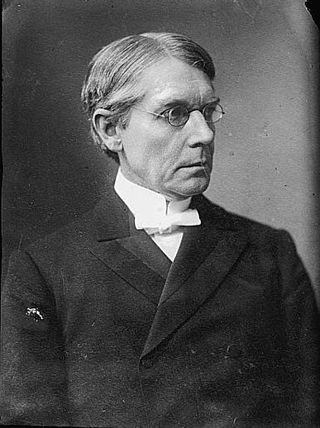
Francis Landey Patton was a Bermudan-American educator, Presbyterian minister, academic administrator, and theologian, and served as the twelfth president of Princeton University.
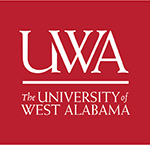
The University of West Alabama (UWA) is a public university in Livingston, Alabama. Founded in 1835, the school began as a church-supported school for young women called Livingston Female Academy. The original Board of Trustees of Livingston Female Academy was selected in 1836 and four of the seven board members were Presbyterians.
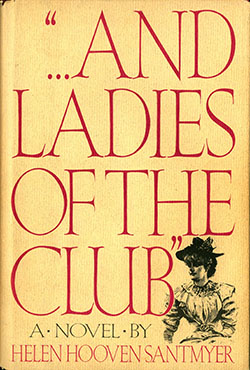
"...And Ladies of the Club" is a 1982 novel, written by Helen Hooven Santmyer, about a group of women in the fictional town of Waynesboro, Ohio who begin a women's literary club, which evolves through the years into a significant community service organization in the town.

Ada Lydia Howard was the first president of Wellesley College.

William Oxley Thompson, D.D. was the fifth president of Ohio State University. During his term as president, he was known for his practice of segregationist policies against black students on campus.
A comprehensive regional university today, the University of North Alabama traces its beginnings to the first half of the 19th century, when the Methodist Episcopal Church sought to bring learning and culture to an obscure mountain in Alabama.

Robert McGill Loughridge was an American Presbyterian missionary who served among the Creek in Indian Territory. He attended Miami University, Ohio, and graduated in 1837. Loughridge was ordained as a Presbyterian minister in October 1842.
Carolina College was a Methodist college for women which operated in Maxton, North Carolina, from 1912 to 1926. The college offered the Bachelor of Arts degree until 1919, at which time it became a junior college offering only the Associate of Arts degree. Financial difficulties forced the closure of the institution in 1926. The property later became Presbyterian Junior College and then Carolina Military Academy. A 1973 fire at the then-closed Carolina Military Academy destroyed the main building.

David Ker, born in northern Ireland, was a minister, educator, lawyer and judge, the first presiding professor of the University of North Carolina.

Rev. John Keep was a trustee of Oberlin College from 1834 to 1870. Keep and William Dawes toured England in 1839 and 1840 gathering funds for Oberlin College in Ohio. They both attended the 1840 anti-slavery convention in London.
Illinois State University was a private institution of higher learning in Springfield, Illinois. It began as The Literary and Theological Institute of the Lutheran Church in the Far West in Hillsboro, Illinois, in 1847. It soon became known as the Lutheran College, and, locally, as Hillsboro College. In 1852, it relocated to Springfield and changed its name to Illinois State University. It ceased operations in 1868, but reopened as Carthage College in Carthage, Illinois, in 1870.
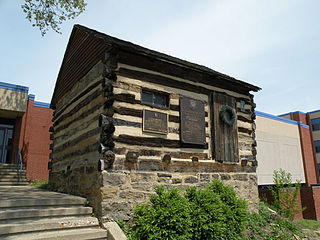
The history of Washington & Jefferson College begins with three log cabin colleges established by three frontier clergymen in the 1780s: John McMillan, Thaddeus Dod, and Joseph Smith. The three men, all graduates from the College of New Jersey, came to present-day Washington County to plant churches and spread Presbyterianism to what was then the American frontier beyond the Appalachian Mountains. John McMillan, the most prominent of the three founders because of his strong personality and longevity, came to the area in 1775 and built his log cabin college in 1780 near his church in Chartiers. Thaddeus Dod, known as a keen scholar, built his log cabin college in Lower Ten Mile in 1781. Joseph Smith taught classical studies in his college, called "The Study" at Buffalo.
Highland Community College (HCC) is a public community college in Highland, Kansas.

Lewis Warner Green was an American Presbyterian minister, educator, and academic administrator. He was the president of Hampden–Sydney College, Transylvania University, and Centre College for various periods between 1849 and 1863. Born in Danville, Kentucky, baptized in Versailles, and educated in Woodford County, Green enrolled at Transylvania University but transferred to Centre College to complete his education. He graduated in 1824 as one of two members of the school's first graduating class. He enrolled at Princeton Theological Seminary in 1831 but returned to Kentucky in 1832 before graduating. After one year as a professor at Hanover College, he returned to Centre in 1839. He left again the next year for a position at Western Theological Seminary in Pennsylvania, where he spent six years. He then went to Baltimore to preach full-time, though he resigned after just over a year and a half due to poor health.
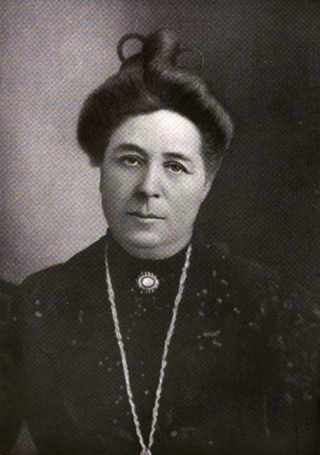
Lilah Denton Lindsey was a Native American philanthropist, civic leader, women's community organizer, temperance worker, and teacher. She was the first Muscogee woman to earn a college degree. She led numerous civic organizations and served as president of the Indian Territory Woman's Christian Temperance Union (WCTU).

Immanuel Lutheran College was an educational institution of the Evangelical Lutheran Synodical Conference of North America whose main purpose was to train Black men to be pastors and both men and women to be teachers. It was founded in Concord, North Carolina, in 1903 and relocated to Greensboro, North Carolina, in 1905. The college was closed in 1961 when the Synodical Conference decided that the training of Blacks should be integrated into the educational institutions of the Lutheran Church–Missouri Synod (LCMS), the largest member of the conference. The former campus was purchased by North Carolina A&T State University.

John Clarke Young was an American educator and pastor who was the fourth president of Centre College in Danville, Kentucky. A graduate of Dickinson College and Princeton Theological Seminary, he entered the ministry in Lexington, Kentucky, in 1828. He accepted the presidency of Centre College in 1830, holding the position until his death in 1857, making him the longest-serving president in the college's history. He is regarded as one of the college's best presidents, as he increased the endowment of the college more than five-fold during his term and increased the graduating class size from two students in his first year to forty-seven in his final year.

Alabama Female Institute was one of the earliest educational institutions for women organized in Alabama. It opened in Tuscaloosa, in the fall of 1829, as "Sims' Female Academy". In 1831, it became the "Tuscaloosa Female Academy". The name change to Alabama Female Institute occurred in 1833, and this school was chartered in 1835. It continued to operate until 1873.
References
- 1 2 3 4 5 6 7 8 Blandin, Isabella Margaret Elizabeth (1909). History of Higher Education of Women in the South Prior to 1860. Neale Publishing Company. pp. 120–25. Retrieved 25 March 2024.
 This article incorporates text from this source, which is in the public domain .
This article incorporates text from this source, which is in the public domain . - ↑ "Synodical. Female College Will Begin Its Next Session Next Monday". The Florence Herald. 3 September 1896. p. 1. Retrieved 25 March 2024– via Newspapers.com.
 This article incorporates text from this source, which is in the public domain .
This article incorporates text from this source, which is in the public domain .